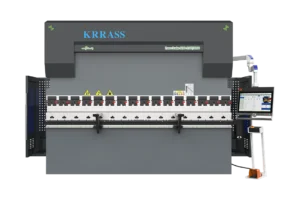Fiber laser cutting machines offer an effective way of cutting and engraving a variety of materials such as metals, plastics, rubber, fabrics, stones and more. This type of technology is widely used in many industries today and can provide quick, clean results. Here we will discuss the operation process of fiber laser cutting machines and discuss what makes them an ideal choice for laser processing.
Pre-Operation Checklist
Before beginning the operation of a fiber laser cutting machine, it's important to go through a pre-operation checklist to guarantee that all equipment is ready for use. The following items should be checked before starting the machine:
- Make sure the laser power source is connected and operational
- Ensure the laser beam path is clear and secured
- Inspect the area to make sure there are no obstructions or safety hazards
- Visually check the laser alignment and focus
- Make sure the work pieces are firmly secured to the table
- Check the cooling system is adjusted and working properly
Starting the Machines
Once all pre-operation checks have been completed, you can now begin the process of starting the machine. First, switch on the laser power source and wait for the laser to warm up to optimal levels. Once the laser is up and running, adjust the lens focus and the parameters according to the material and the desired cutting effect.
Programming the Machine
The next step is to program the machine with the desired cutting settings. As this will vary based on the material being cut and the desired finish, it is important to program the machine correctly. Most fiber laser cutting machines come with a graphical user interface (GUI), making programming easier as all features and parameters can be selected from a single screen.
Begin Cutting Operation
Once all parameters and settings are programmed, and verified, it is time to begin cutting. When cutting begins the necessary safety measures must be taken. For example, the workspace should be kept clear of any combustible and flammable materials or liquids. It is also important to use appropriate eye and skin protection when working with lasers to avoid possible injuries from heat or light emitted from the laser.
Finishing Up
After the cutting process is complete, turn off the laser power source. Then inspect the work-pieces for accuracy and quality. If needed, perform any post-processing operations such as deburring and chamfering. Finally, store the processed parts and dispose of the remaining scrap materials accordingly.
Conclusion
Fiber laser cutting machines are an effective and efficient way of cutting and engraving a wide range of materials. It is important to understand the entire operation process of a fiber laser cutting machine before starting to use one. By going through the pre-operation checklist, starting the machine, programming the machine and ensuring all safety measures are taken, the entire process can run smoothly and quickly.
Learn more about our products, please visit and subscribe to our Youtube channel





